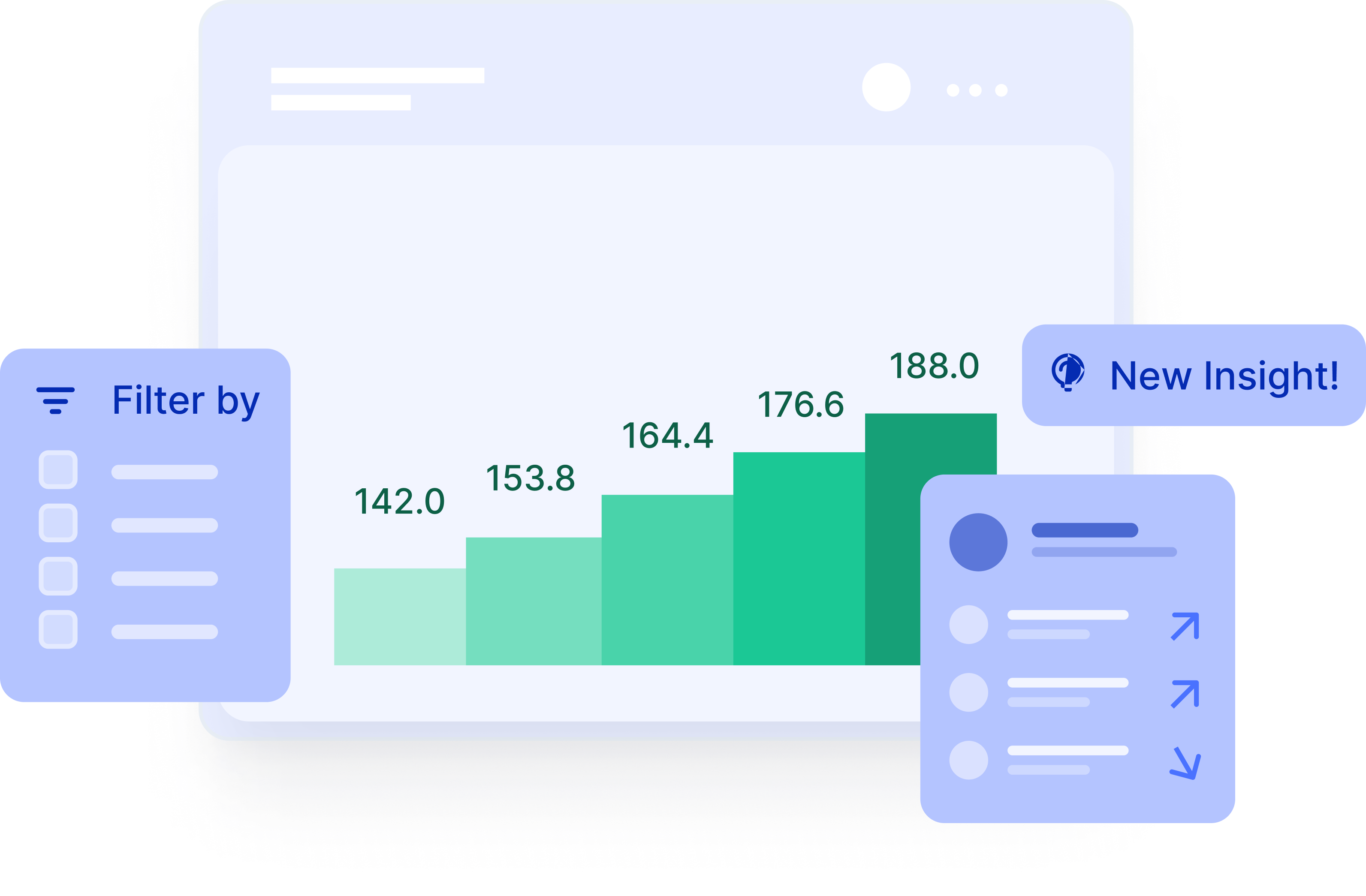The Ultimate Guide to Revenue Operations (RevOps)

Co-founder & CTO
So what is Revenue Operations or RevOps? At its core it’s a strategy that aligns revenue-generating activities across the entire customer lifecycle. A holistic approach that breaks down silos by uniting sales, marketing and customer success teams under a common strategy in order to maximize the organization’s ability to generate revenue.
In this guide to revenue operations, we’ll explain:
- Why businesses need a RevOps strategy
- Why they should transition to RevOps
- How RevOps increases profitability
- How to build an effective RevOps framework

What is Revenue Operations?
As a business grows, it becomes harder and harder to plan and maintain processes that keep everyone working towards the same goals. Moreover, in today’s increasingly service-based economy, customer journeys no longer revolve solely around making purchases. They also involve onboarding new customers, upgrading and managing their accounts, and engaging them throughout the duration of their doing business with you.
Traditionally, sales and marketing teams were disconnected, each one working towards their own goals with minimal involvement from other teams. The concept of customer success wasn’t even a thing. However, that’s all changed in the age of the customer, where businesses must take a holistic view of the entire customer lifecycle.
Without a unified strategy, operational silos become an inevitability. Having sales, marketing and customer success teams working in their own bubbles is never good for business since it directly impacts the ability to generate revenue. These silos lead to frequent miscommunications, inconsistencies and duplicated efforts.
Consider these scenarios which represent processes that are far from optimal. The sales team might miss out on lucrative opportunities due to delays in obtaining relevant leads from the marketing team, which might be focused on the wrong campaigns because they don’t know what offers are actually working in the field. Alternatively, the sales team might be selling products and services that customer success teams don’t have the time nor the insights to support, leading to disappointment for the finance team because recently closed deals aren’t as profitable as expected due to customer churn.
Consequently, more and more people are now asking “What does Revenue Operations do?” The short answer is that it is a strategic approach to bridging these gaps and promoting revenue growth by creating a unified process spanning the full revenue stream starting with the very first time a potential customer has engaged with the business. By equipping teams with methodologies and tools that provide stronger collaboration and visibility, RevOps seeks to break down the silos around people, processes, data and technology. A robust RevOps strategy is agile, scalable and adaptable, meaning that it can grow alongside the business.
Who needs revenue operations?
Although the exact definition of revenue operations differs by sector, every business can benefit from the basic strategy, particularly once they start scaling up. One recent survey of businesses across various industries found that 56% of respondents were confident in far exceeding their revenue goals after rolling out a RevOps strategy.
That said, it is especially important for SaaS companies to transition to a revenue operations strategy since they typically deal with lengthy and complex customer journeys that become difficult to manage at scale. In their case, onboarding a new customer is just the beginning. It’s keeping those customers that really counts when it comes to generating revenue.
How do revenue operations differ from other strategies?
In today’s business jargon, there’s no shortage of neologisms ending in ‘-Ops’, so a degree of confusion is understandable!
RevOps is most commonly confused with SalesOps. However, while there’s some crossover, they’re not the same thing. As the name suggests, SalesOps is all about optimizing the sales process, whereas RevOps is all about consolidating the functions of all the business departments that generate revenue. To that end, SalesOps is more of a subset of RevOps.
Another increasingly common term, particularly in the SaaS sector, is FinOps, or financial operations. Both strategies are geared towards helping businesses optimize their investments and improve revenue, and both center around cross-team collaboration. FinOps, however, is a more technical discipline that focuses specifically on optimizing spend and monitoring its impact on revenue. By contrast, RevOps focuses on the entire customer journey with a focus on optimizing revenue flow. The terms aren’t mutually exclusive and can operate together with most SaaS vendors ultimately needing both.
Answer important business questions

How does revenue operations increase profitability?
We live in an era of instant gratification and choices aplenty. Customers won’t stick around for long if they feel they’re not getting the level of responsiveness and service they expect. Thus RevOps has emerged as a high-impact strategy for accelerating growth throughout the entire customer lifecycle. This is particularly the case among B2B technology vendors where studies have shown increases in digital marketing ROI of up to 200%, a 10% increase in lead acceptance, and a 30% reduction in go-to-market (GTM) expenses.
So going back to the ‘what is revenue operations’ question, we can say that it is all about achieving operational efficiency, which has become a key driver of profitability. At SaaS companies, it relies heavily on technology-driven automation for carrying out key operations such as go-to-market planning, tracking sales performance, and ensuring that all relevant parties have access to consistent and relevant data.
Backed up with unified and clearly defined workflows, a robust strategy greatly reduces the amount of time it takes for tasks that range from following up with leads and all the way to onboarding new customers. That’s vital from a profitability standpoint, not least because companies are over 20 times more likely to turn new leads into real sales opportunities if they follow up within five minutes, as opposed to an hour.
Another study found that 80% of sales require five follow-up interactions after the first one, yet 44% of sales reps give up after just one follow-up. Although there are many possible reasons for this, one of the most common is a lack of standardized approaches to following up. In other cases, the problem might be down to a lack of resources or required expertise.
It's important to emphasize that the scope of RevOps is far broader than sales and marketing alone. After all, gaining a new customer is just the beginning, especially for SaaS vendors and other service-based companies. The real secret to profitability lies in a customer’s ongoing business. However, according to a Gallup poll, just 29% of B2B customers are fully engaged, with the rest at risk of leaving for a competitor.
In general, revenue generating teams are quite frequently either unclear on their responsibilities or lack easy access to the data-driven insights they need to make informed decisions in less time. When that happens, potential and existing customers end up being let down, and that has a direct impact on revenue.
How to implement an effective revops structure
RevOps is all about alignment. To achieve that alignment, businesses need a framework that unites people, processes and technology across all teams involved in generating revenue. The first stage is to build your revenue operations team. There’s no one-size-fits-all approach here, since every business has unique needs depending on its size, industry and the speed at which it’s changing and evolving but there are some basic guidelines.
RevOps: People
Alignment starts with people having a clear understanding of their roles and responsibilities and, in the case of RevOps, their impact on revenue.
RevOps leaders must strive to build trust and credibility between teams and determine which metrics should be tracked by the different teams. There also needs to be some degree of freedom when structuring a RevOps team, not least since the market can change – sometimes suddenly and without warning.
The best way to start is by outlining the basic revenue operations roles that make up a complete team:
- As team leader, the responsibility of the head of revenue operations is to ensure alignment between sales, marketing and customer success teams, and to establish goals that keep everyone on target. Larger businesses might have a dedicated role for a RevOps leader, while smaller companies might designate the head of the sales or marketing department for that role. The RevOps leader will be the primary point of contact for the revenue leaders, and is responsible for holding all teams accountable to shared success metrics.
- The manager role involves organizing GTM strategies spanning the customer journey. They should have a clear understanding of how things are working now, as well as what they want to achieve. Their job is to address specific barriers and areas of improvement, such as lead routing and customer onboarding. They are also in charge of creating the various updates required by the revenue leaders either periodically or in real-time, including goal tracking, weekly forecasts, monthly review, QBRs, annual planning, board deck, etc. The manager may be the same person as the team leader, especially in smaller organizations, while larger businesses will likely create such a role for each department or line of business.
- The data analytics team will be responsible for collecting and measuring the data that matters to achieving the goals set by team leaders and project managers. They are in charge of calculating revenue operations metrics, creating detailed spreadsheets, cleaning and aligning the different data sources, building dashboards for reporting purposes, and more. This team may consist of professional data analysts and engineers who are well versed in areas like business intelligence and data science. Fortunately, you may not necessarily need a full data team if you instead have an automated revenue analysis solution, which we’ll discuss further on.
- The platform team is responsible for the technology stack that underpins the revenue operations strategy. The role may fall to a dedicated team or to an existing DevOps team. This team will typically consist of software engineers and system integrators who will be responsible for connecting your data sources and ensuring that data analysts have all the systems and data they need to do their jobs. Once again, implementing an automated revenue operations platform minimizes the need for a full platform team, effectively allowing you to outsource your tech stack.
RevOps: Process
The RevOps process is a consolidated business strategy that starts with the marketing team before leading into sales and then, finally, to customer success. While the overarching goals are the same (i.e., increase revenue and reduce operational expenses), different teams meet those goals in a variety of ways. Naturally, the broader RevOps process must be closely aligned with the customer journey that you want to build.
The first step is to map out the entire end-to-end customer journey. Start by creating detailed definitions of your target customer personas, including their challenges, interests and goals. Next, list all the possible touch points they might have during their engagement with your business. Finally, identify any possible roadblocks that prospects or customers might run into during these touchpoints. The end goal is to integrate your go-to-market strategy so that the customer journey proceeds seamlessly without any bottlenecks.
Of course, any business process is only ever going to be effective if it’s properly measured. This is why RevOps requires agreeing on data strategy and governance to collectively support decision-making across every stage of the customer journey. Revenue leaders must establish both shared metrics, as well as those that are relevant to specific teams and roles. We’ll look at the role of data analytics and which metrics to track in more depth below.
RevOps: Technology
As a data-driven approach to optimizing revenue streams, RevOps relies heavily on a modern and consolidated technology stack. Large enterprises often have a fully staffed and dedicated development team responsible for implementing technical solutions intended to accommodate the goals of RevOps teams.
Fortunately, however, there are now software-based solutions on the market that minimize the need to build a large team of data experts that can implement complex business intelligence (BI) systems, integrate them into all other related data sources, and make sense of the massive amounts of revenue data that is collected across the company. Thanks to automated revenue operations solutions, it's now possible to have the same level of functionality as that enjoyed by big enterprises – at a fraction of the cost.
When it comes to RevOps technology, automation should be the key focus in order to streamline processes and improve productivity and performance. It saves lots of time and resources currently tied up in manual work around repeatable and routine workflows, and frees up the team to work on more strategic tasks. For example, there’s rarely any conceivable reason why marketing teams should have to manually collect and hand over lists of leads for the sales team to follow up with.
A RevOps tech stack includes several main components, each of which provides varying levels of automation:
- Customer relationship management (CRM) software such as Salesforce which allows you to store all your customer data in a single location. These solutions are much more convenient and accessible than traditional spreadsheets and databases, thus helping you standardize and simplify your workflows and preserve data quality and integrity.
- Project management tools such as Trello and Asana which help keep otherwise disparate teams on the same track by facilitating collaborative workflows and notifications. They allow users to assign tasks to specific teams or team members and tag tasks by their current status.
- Revenue operations and intelligence (RO&I) software may be the most important component of the RevOps tech stack because it uses machine learning and automation to streamline data collection, synchronization and management throughout your various revenue pipelines. A robust RO&I platform should integrate with all your data sources and automate all repeatable routine functions related to revenue generation. There are RO&I solutions that are specific for sales or marketing purposes, but a RevOps team needs one that works across the entire revenue stream.
Of course, there are literally dozens of additional tools that make up the sales and marketing tech stack. Marketers have thousands of tools to choose from across areas like advertising, content management, social media and data management. However, as is the case with any consolidated business strategy, less is more. RevOps should reduce complexity by seamlessly integrating with your existing environment, ideally with one-click connectivity for data input and output systems such as accounting software, CRM and project management.
While the overarching goal of RevOps is people-centered, technology is the main enabler of the concept. As such, additional solutions may be added to achieve specific goals. For example, sales teams might use chatbot software to automatically follow up with leads, while marketing teams might use automated lead routing software to pass leads to specific sales reps. Once you’ve mapped out your RevOps process and built your team, you’ll be able to build out a tech stack that works for you.
Which revenue operations metrics do you need to track?
At the very heart of any RevOps framework are the revenue operations key performance indicators (KPIs) that keep your team informed about how they’re doing and where there are opportunities to improve. As we mentioned previously, agreeing on which metrics to track is an essential first step towards building a working RevOps strategy.
Tracking the right metrics allows teams to continuously improve their strategies, whether it’s identifying the most effective marketing messages, choosing the best salespeople for a given project, or identifying differences in customer retention levels.
Because there are hundreds of possible metrics you can track, it’s important to home in only on the ones that matter most to your particular business. After all, trying to track everything will quickly become a burden for your team and make it much harder to prioritize effectively.
You can read more about which revenue metrics SaaS companies should track in our recent guide, but as an example they might want to prioritize the following metrics:
- Cost of customer acquisition
- Customer lifetime value
- Monthly and annual customer revenue
- Customer retention rate
- Account renewals and upsells
- Sales pipeline velocity
- Lead conversion rates
Access GTM templates platform

To RevOps or Not to RevOps?
As people become more aware of the RevOps approach, you’ll hear the ‘what is revenue operations?’ question less and less. But there will always be a need to align executives and teams around its practical application and how it can help reduce costs, free up time for people to focus on strategic initiatives, and capitalize on new opportunities as soon as they arise.
Having people, processes and technology working in isolation inevitably leads to inefficiency, especially in rapidly growing companies. At the same time, customer expectations are higher than ever with fierce competition for each prospect. Here are some of the areas that revenue operations teams need to address in order to win those battles:
- Disconnects and misalignment between revenue data sources
- Customer expectations of integrated buyer journeys
- Using automation to drive full-funnel process efficiency
By driving more strategic use of technology, reducing complexity and achieving alignment throughout the business, RevOps delivers higher success rates, reduced sales cycles and, ultimately, increased revenue and growth. In an era of constant change and unpredictability, such a degree of operational efficiency is no longer just nice to have – it’s a key business imperative.
As mentioned above, automated revenue analysis and optimization platforms such as Sightfull make it much easier for SaaS revenue operations teams to achieve those goals. Not only does it automate the basic RevOps functions of cleaning and aligning data, metric calculation and dashboard creation, it also provides actionable insights and proactive alerts that provide a clear story of what is, and isn’t, working in the company’s go-to-market plans.
FAQ
Talk to an expert
Learn more about to align your revenue-generating activities across the entire customer lifecycle
Precisely track and analyze your revenue performance
Gain access to essential insights and trends that directly impact your ability to drive revenue growth and enhance business performance.



















